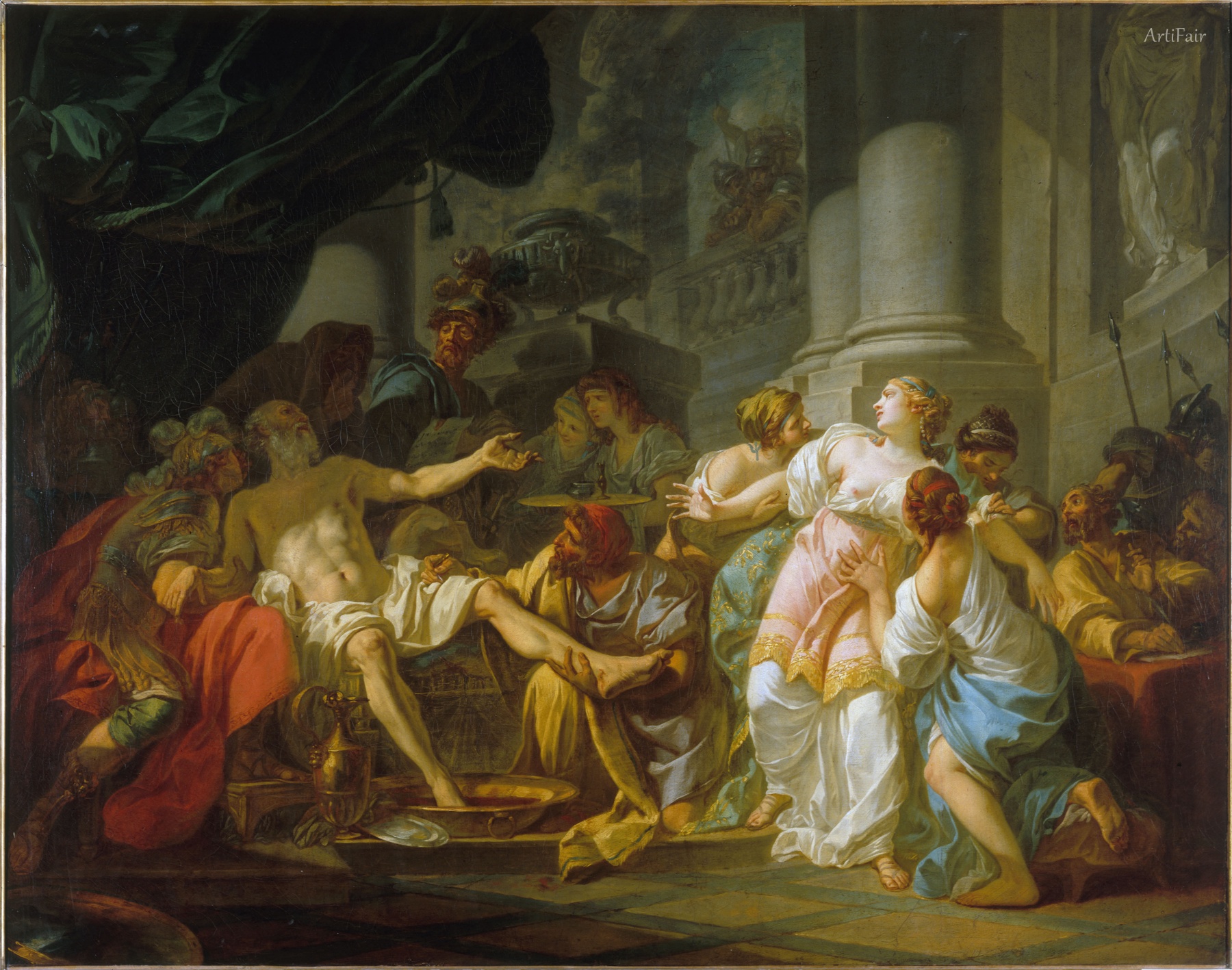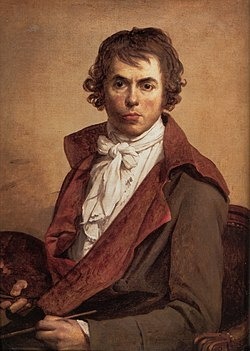

Jacques-Louis David
FR
161
Artworks
1748 - 1825
Lifespan
Artist Biography
Jacques-Louis David (1748–1825) stands as the preeminent French painter of his era and a principal figure in the late 18th-century Neoclassical movement, which reacted against the perceived frivolity of the Rococo style. Born in Paris, David's early life was marked by tragedy; his father was killed in a duel when he was nine, leading to his upbringing by prosperous architect uncles. Despite their hopes for him to pursue architecture, David's passion for drawing led him to the studio of François Boucher, who then directed him to Joseph-Marie Vien, a painter more aligned with the burgeoning classical taste. After initial setbacks, including several failures and a suicide attempt, David won the coveted Prix de Rome in 1774. This scholarship facilitated a transformative period in Italy (1775-1780), where he immersed himself in classical antiquity and the works of Renaissance masters, profoundly shaping his artistic vision away from Rococo's lightness towards a more austere and moralizing aesthetic.
Upon his return to Paris, David rapidly gained acclaim. His 1784 masterpiece, *Oath of the Horatii*, became a sensational emblem of Neoclassicism. Its stark composition, sober colors, and depiction of stoic Roman patriotism resonated deeply with the pre-revolutionary mood, advocating for civic virtue and self-sacrifice. This work, along with subsequent paintings like *The Death of Socrates* (1787) and *The Lictors Bringing to Brutus the Bodies of His Sons* (1789), solidified his reputation. These paintings were not merely stylistic exercises; they carried potent moral and, increasingly, political messages, aligning with Enlightenment ideals and the growing discontent with the Ancien Régime. David's style was characterized by its linear precision, clear compositions, and dramatic use of light and shadow, drawing inspiration from Caravaggio and Poussin, yet forged into a distinctly Neoclassical language.
The French Revolution (1789) saw David transition from a celebrated artist to an active political participant and propagandist. A fervent Jacobin and friend of Maximilien Robespierre, he served in the National Convention, voting for the execution of Louis XVI, and effectively became the artistic director of the Revolution. During this period, he produced some of his most iconic works, including *The Death of Marat* (1793), a powerful and realistic portrayal of the murdered revolutionary leader, often considered a "Pietà of the Revolution." He also designed revolutionary festivals and costumes, using his art to shape public opinion and iconography. His commitment led to his imprisonment after Robespierre's fall in 1794, during which he painted his only landscape, *View of the Luxembourg Gardens*, and a self-portrait.
Released after the Thermidorian Reaction, David refocused on teaching and painting. His work *The Intervention of the Sabine Women* (1799) signaled a shift towards a more graceful, Greek-inspired style and was interpreted as a plea for reconciliation. His talent soon attracted Napoleon Bonaparte, who appointed him First Painter to the Emperor. Under Napoleon, David developed his "Empire style," notable for its grandeur and warm Venetian colors. He produced monumental works celebrating the Napoleonic regime, such as *The Consecration of the Emperor Napoleon and the Coronation of Empress Joséphine* (1805–07) and *Napoleon Crossing the Alps* (1801). Despite his focus on historical and propagandistic subjects, David remained a masterful portraitist throughout his career, capturing the personalities of his sitters with remarkable insight.
Following Napoleon's downfall in 1815, David, as a regicide, was exiled to Brussels. Although his creative energy somewhat diminished, he continued to paint and teach. His studio had been a crucible for a generation of artists, including Jean-Auguste-Dominique Ingres, Antoine-Jean Gros, and François Gérard, ensuring his profound influence on 19th-century French art, particularly academic Salon painting. David's legacy is complex: a master technician who defined Neoclassicism, a politically engaged artist who navigated tumultuous times, and an influential teacher whose work laid foundations even as his students eventually moved towards Romanticism. He died in Brussels in 1825, leaving behind a body of work that continues to command respect for its artistic power and historical significance.